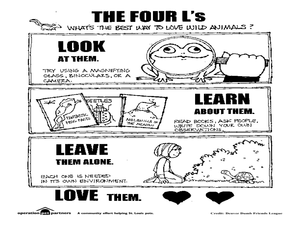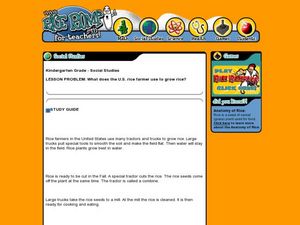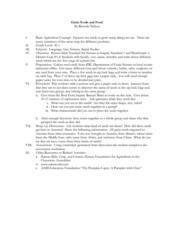Curated OER
Observation Hike
Students participate in an observational hike to study the natural surroundings. In this observational hike instructional activity, students hike through a state park and observe the plant and animal life. Students learn...
Curated OER
People Who Work in the Woods
Students study the types of jobs that people can do in the forest. They examine those who study the forest, harvest the trees, and plant trees to renew the forest.
Curated OER
It's Fun to Learn!
Students use the macro mode of the OLYMPUS FE-140 CAMERAS as virtual microscopes to explore different habitats, observe plants, soil, and insects and other creatures. They download those images on electronic files and build web pages....
Dick Blick Art Materials
Mehndi Art Gloves
Class members get a chance to practice the art of Mehndi as they use markets to apply patterns to a latex glove.
Curated OER
Numbers in Art
Students choose a number from one to twelve and tell a number story about it. They listen to the teacher read "Numbers in Art" by Lucy Micklethwait. Students choose three numbers from one to twelve and view works of art while looking for...
Curated OER
Amazing Grazing: Keeping Our Ecosystem Running
Students discover the value of sustainability within our ecosystem. In this ecological lesson, students discuss the importance of a food cycle in our society, and how humans can improve the conservation of a healthy ecosystem. Eventually...
Curated OER
Wonderfully Wild Unit the four L's of Wildlife
Students appreciate the natural environment. In this "four L's" lesson, students observe, reflect and appreciate unique ecosystems and how they help sustain life. Students create posters with the four L's.
Curated OER
What does the U.S. rice farmer use to grow rice?
Students discuss how a farmer grows rice. In this rice instructional activity, students discover the different tools needed to grow rice and how rice is cut and cleaned. They draw a picture of a rice farm.
Curated OER
Making Paper
Pupils brainstorm why trees are important to humans and the value of forests. They then participate in making paper in class. They may decorate the paper adding glitter, dried flowers, etc.
Curated OER
Visual Pictures of the Buffalo National River
Students create art in a Buffalo National River unit. In this Buffalo River art lesson, students create woven rugs, make baskets, create pottery bowls, build log cabins, and construct tipis. They create a bulletin board where the...
Curated OER
Animals and Environments
Students listen to stories and identify animals and their young. In this animals lesson, students view videos about farm animals and create illustrations to show how animal babies change over time. Students discuss...
Curated OER
Who's Who?
Students explore biology by identifying animals and their environments. In this animal characteristic lesson, students read assigned text about farm animals, how they are raised, and what they are used for in our society. Students view a...
Curated OER
Force of Habitat
Students examine the Nevada state quarter and discuss the Great Basin and the desert habitat. They draw a desert animal and write a sentence about its attributes and how they help the animal to survive in its habitat.
Curated OER
Squanto's Science Lesson
Students explore Squanto's contribution to the settlers. They plant seeds and follow instructions for water and fertilization. Students keep a record of the growth of the seeds. They write a paragraph that tells what they learned from...
Curated OER
Something Fishy Going On
Students create a video animation of how Swimmy gathered his fish friends together to form a great big fish that would frighten the predator tuna away. In art class each child create a small red fish which gets displayed in the ocean...
Curated OER
Baa, Ram, Ewe.... Sheep Tales
Students explore animal characteristics by reading animal stories in class. In this sheep habitat lesson, students identify the uses for sheep in our agricultural based society and the importance of wool in our economy. Students read...
Curated OER
Grain Seeds and Food
Students observe the characteristics of different seed types. They classify, sort, name and write about the seeds.
Curated OER
What's Hatching in Kindergarten?
Students identify oviparous animals. They brainstorm a list of animals that lay eggs, read "Chickens Aren't The Only Ones" by Ruth Heller and then add to the list. Students complete a booklet that shows an egg and an oviparous animal.
A to Z Teacher Stuff
A to Z Teacher Stuff: The Great Kapok Tree (Lesson Plan)
Help your students develop an understanding of a rain forest ecosystem and the environment through this social studies lesson.


















